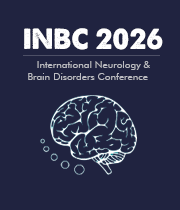Title : Mimicking Deep Brain Stimulation (DBS) via minimally invasive chemo-genetic manipulation of the subthalamic nucleus shows a recovery in parkinsonian behavior in rat models
Abstract:
Parkinson’s disease (PD) is a prevalent neurologic disorder characterized by the degeneration of dopaminergic neurons in the substantia nigra pars compacta (SNc). This augments the indirect pathway by over-exciting the sub-thalamic nucleus (STN) causing excessive suppression of motor activity. Current treatments include DBS, where an electrode is implanted into the brain to suppress STN over-activity which is powered by a battery pack implanted sub-clavicular. In a 2002 study, Dr. Luo modeled DBS chemo-genetically by injecting adeno-associated virus encoding glutamic acid decarboxylase (GAD) into the STN of a Parkinson’s induced rat. The GAD converted all glutamatergic excitatory projections into GABAergic inhibitory projections. This transformed the over-excited STN into an inhibitory nucleus and remediated Parkinsonian behavior. Our goal was to further this study by converting excitatory neurons in the STN into inhibitory neurons via GAD, then excite the now inhibitory STN via synthetic neurotransmitter receptors to reduce the indirect pathway’s excessive suppression of motor activity in PD.
We used adeno-associated virus to inject rats with GAD + excitatory “DREADDs” (retro-AAV2-DIO-hM3Dq-mcherry). “DREADDs” are “designer receptors exclusively activated by designer drugs” that act as synthetic neurotransmitter receptors to drive inhibition of the basal ganglia via stimulation by a synthetic ligand (clozapine-n-oxide, CNO). Our injections targeted STN projections to the substantia nigra pars reticulata (SNr). With this model, therapies were injected into the SNr and traveled retrograde to the STN where we injected the required DNA recombinase (AAV2-Cre-GFP) for protein expression. To Induced a Parkinsonian phenotype, we used a 6-OHDA lesion into the left medial forebrain bundle. To examine therapy efficacy, we used an amphetamine-induced rotation behavioral assessment which elicited a unidirectional counterclockwise (CCW) rotation preference in untreated Parkinsonian rats.
Amongst the treated cohorts, we observed a 47% reduction in CCW rotations and a strong trend towards impartial CCW vs CW rotations at 5 weeks post-treatment.
This therapy showed evidence of Parkinsonian phenotype remediation and suggested potential for a minimally-invasive non-implant alternative to current treatment modalities promising a better patient quality of life.




